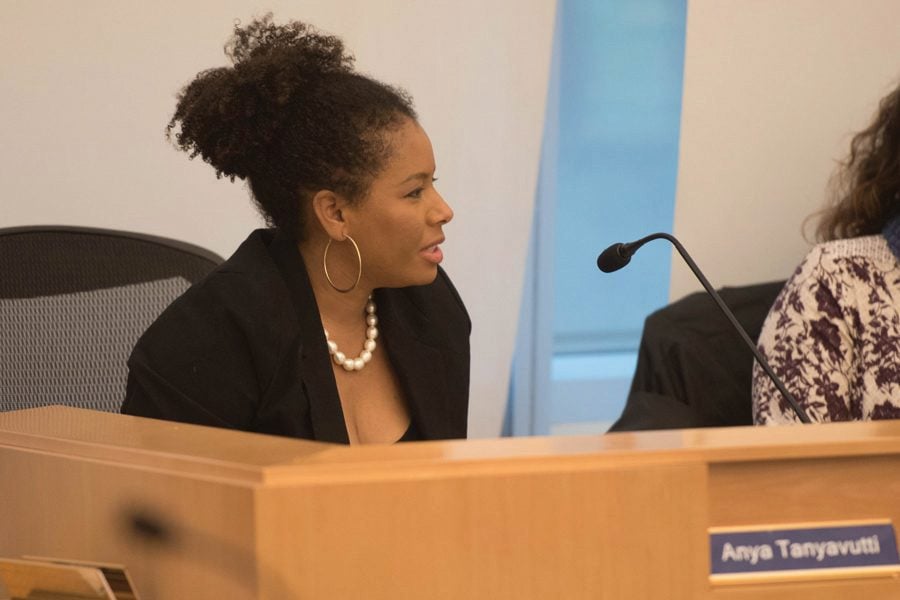District 65 saw an increase in kindergarten literacy scores
Daily file photo by Allie Goulding
Anya Tanyavutti speaks at a District 65 board meeting. Board members discussed the increase in students meeting the benchmark for kindergarten readiness
March 5, 2019
Evanston/Skokie School District 65 board members expressed excitement at a board meeting Monday after looking at data that showed an increase in kindergarten readiness from winter 2019.
District 65 director of literacy Elizabeth Cardenas-Lopez updated board members on the rise in students meeting the winter Developmental Reading Assessment kindergarten readiness benchmark, a measure that decreased last year.
The winter 2019 DRA data is compared to the 2012 to 2016 five-year average baseline, which is part of the K-3 Literacy Framework, according to a memo sent by Cardenas-Lopez and Stacy Beardsley, District 65’s assistant superintendent of curriculum and instruction. There is not a consistent pattern across grade levels in the district, the memo said.
Last year, District 65 saw a seven-point decrease in the amount of students who met the kindergarten readiness benchmark according to the Illinois Snapshots of Early Literacy, the memo said. However, there was a 10.6 percent increase in students who reached the winter DRA kindergarten readiness in comparison to the five-year baseline. The district saw increases of over 10 percent for both black and Hispanic students reaching the benchmark.
Cardenas-Lopez said the district has core standards for learning at all levels, which inform their “high expectations for student learning.” She said they also work to ensure teachers, coaches and other staff members have the opportunities and resources to support students at different learning levels.
“This year more than ever, we are focusing on providing culturally responsive teaching, culturally responsive practices in the work that we are doing, having that growth mindset made an addition to the needs of our students,” Cardenas-Lopez said. “We need to know who our students are, their strengths and abilities.”
District 65 aims to emphasize culturally responsive pedagogy to improve education for marginalized students. Board members discussed an update to this element of curriculum at a board meeting in January.
The framework for literacy is based on three components—language, reading and writing workshop—which inform instruction and intervention. To determine a student’s literacy level, teachers need strategies so that “learning becomes second nature” for students, Cardenas-Lopez said.
Cardenas-Lopez said that while there “has been some progress, more needs to be done,” and hopes that teachers will be “more intentional” in working with black, Hispanic and other students of color. Though they are working with Foundation 65 and YMCA, the district also hopes to partner with other organizations that will address bilingual needs, Cardenas-Lopez said.
Board vice president Anya Tanyavutti said it is “pretty incredible” that after a dip in kindergarten readiness shown by ISEL, there is an increase in literacy proficiency for the students.
“That’s really affirming information to hear in comparison to that surprising (ISEL) data,” Tanyavutti said.
Board member Sergio Hernandez said he “shares excitement” at the increase after the “dire” kindergarten readiness data. He said he is looking to see the connection between pre-K and kindergarten strengthen because students often do well until they reach kindergarten.
He said the data is “promising” because it shows that the kindergarten classes are ready for students.
“If children arrive so called kindergarten not ready then we have strategies, we have approaches, we have curriculum that is actually going to meet their needs and get them to where they need to be,” Hernandez said. “This is exciting.”
Email: [email protected]


